Most rims are no nudists. Such colonists receive a debuff for wearing clothes. If you don't have nudists in your colony, everyone will need clothing to avoid the "naked" debuff.
Leather from Hunting
You can get twenty different types of leather from the various wild animals. Which wild animals occur in your region depends on the biome.
To hunt, select animals and click on hunt (shortcut "O"). A hunter will soon walk by and kill the animals. It is crucial for the hunter that he is equipped with a ranged weapon and has a high value for "shooting". This way, he can do his job from a safe distance.
The various wild animals have a certain chance to take revenge if they are attacked. In such a case they become manhunters and attack any human being that gets in their way. It becomes particularly dangerous when this animal is in a herd. Then you will be attacked by all the animals in the pack.
If the animal to be hunted has a particularly high chance of taking revenge, it is advisable to send several hunters to one target.
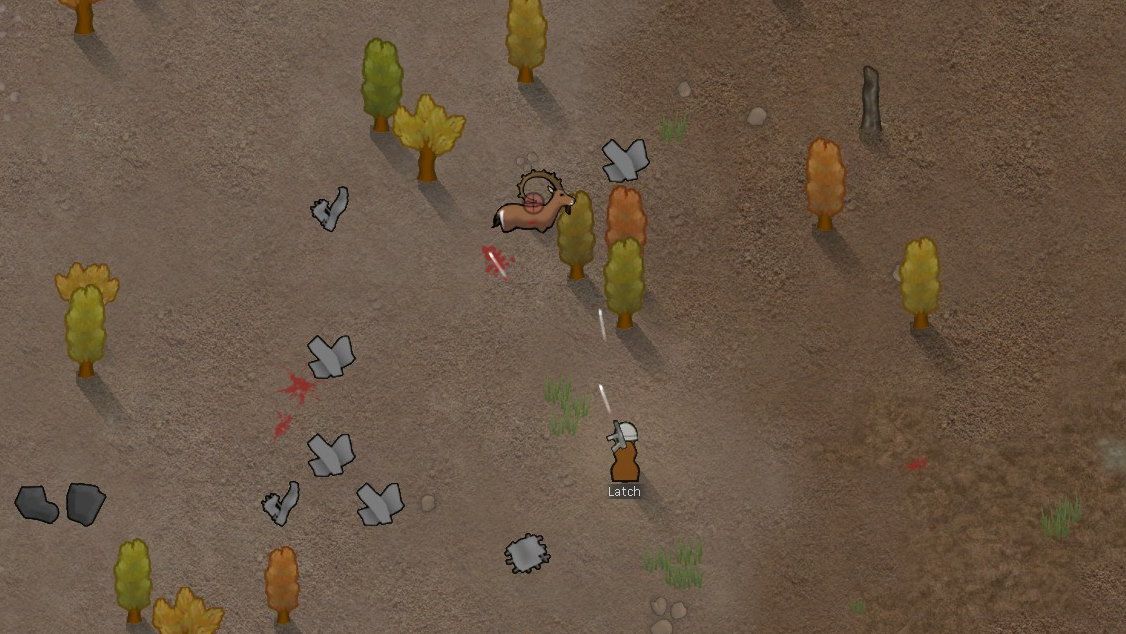
The hunted animals should now be stored in a freezer until they are further processed on the butcher table (alternatively butcher spot). The butchering of animals is carried out by each colonist who is assigned to the task "cooking".
Depending on the size of the animal, you will receive a certain amount of meat and leather. This leather can now be used for the production of clothing.
If you have leftovers of different types of leather, you can process them to patchleather at the tailor bench. Patchleather has the lowest sales value and stats of any leather, but if you urgently need clothing, it's better than nothing.
Wool and other Fabrics
In addition to leather, there are also different types of fabrics from which clothing can also be made. To get the wool from e.g. muffalos or alpacas, you need to tame them first. To do this, click on the wild animal and on "tame" (shortcut: "N").
For the tamed animal, it makes sense to build an extra room to protect your supplies from your wild roommate. Via Animals > Manage areas > New area you can define an area for the animal in which it should stay.
So that the animal does not starve to death, you now have to build a feeding station, which is also regularly refilled:
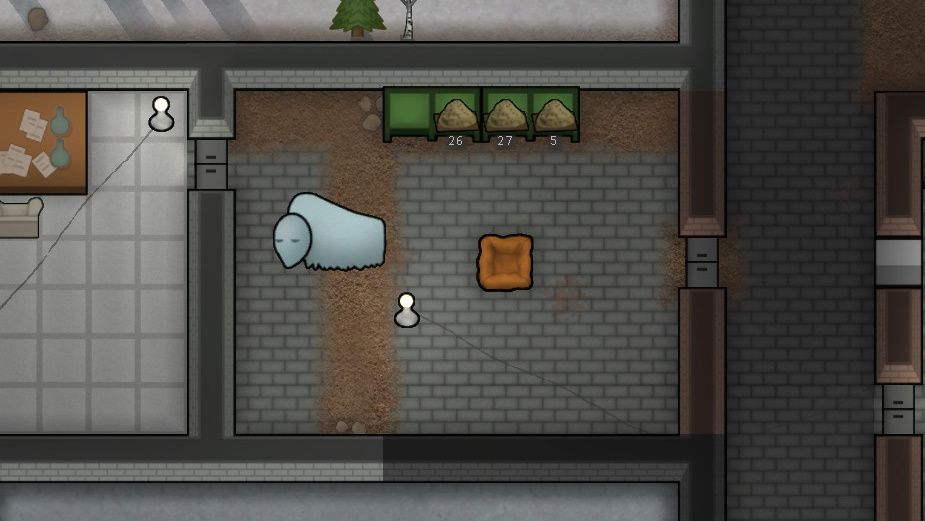
With this setup you now have a constant source of muffalo wool. This means that you never have the problem of being completely out of clothes.
Regular cloth can be made by growing the cotton plant in growing zones or in hydroponics.
Devilstrand can be harvested from the devilstrand mushrooms. In order to grow these mushrooms, you must first complete the research for devilstrand. In addition, a colonist must have the "plants" skill at least on level 10 to grow this plant.
Synthread and hyperweave can only be purchased from traders or obtained via drop pods. Together with devilstrand, they are among the three most expensive fabrics in RimWorld.
Making Clothes
For the production of clothing you either need a crafting spot (for stone age colonies) or a tailor bench (unlocked through the research "Complex clothing"). There are various bills that can be created for colonists with the work "tailor".
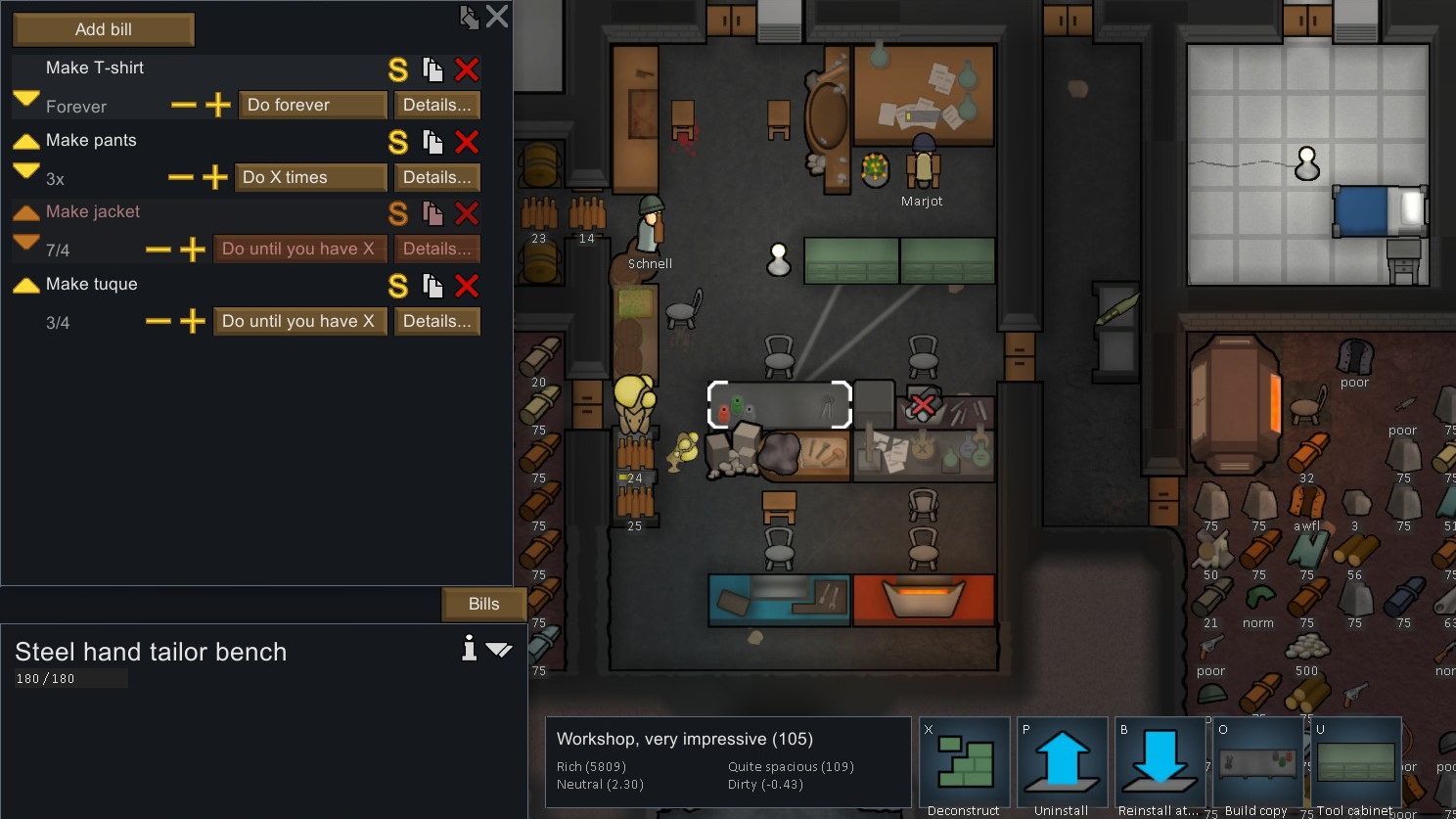
Bills can be repeated differently. Depending on what you want, it makes sense to adapt it:
- Do X times
- Do until you have X
- Do forever
When it comes to clothing, it makes sense to only make as much as you need for your own use (do until you have X). For this I always equip my colonists with a set of clothes, while another set of clothes is available in the stockpile if the current clothes are tattered.
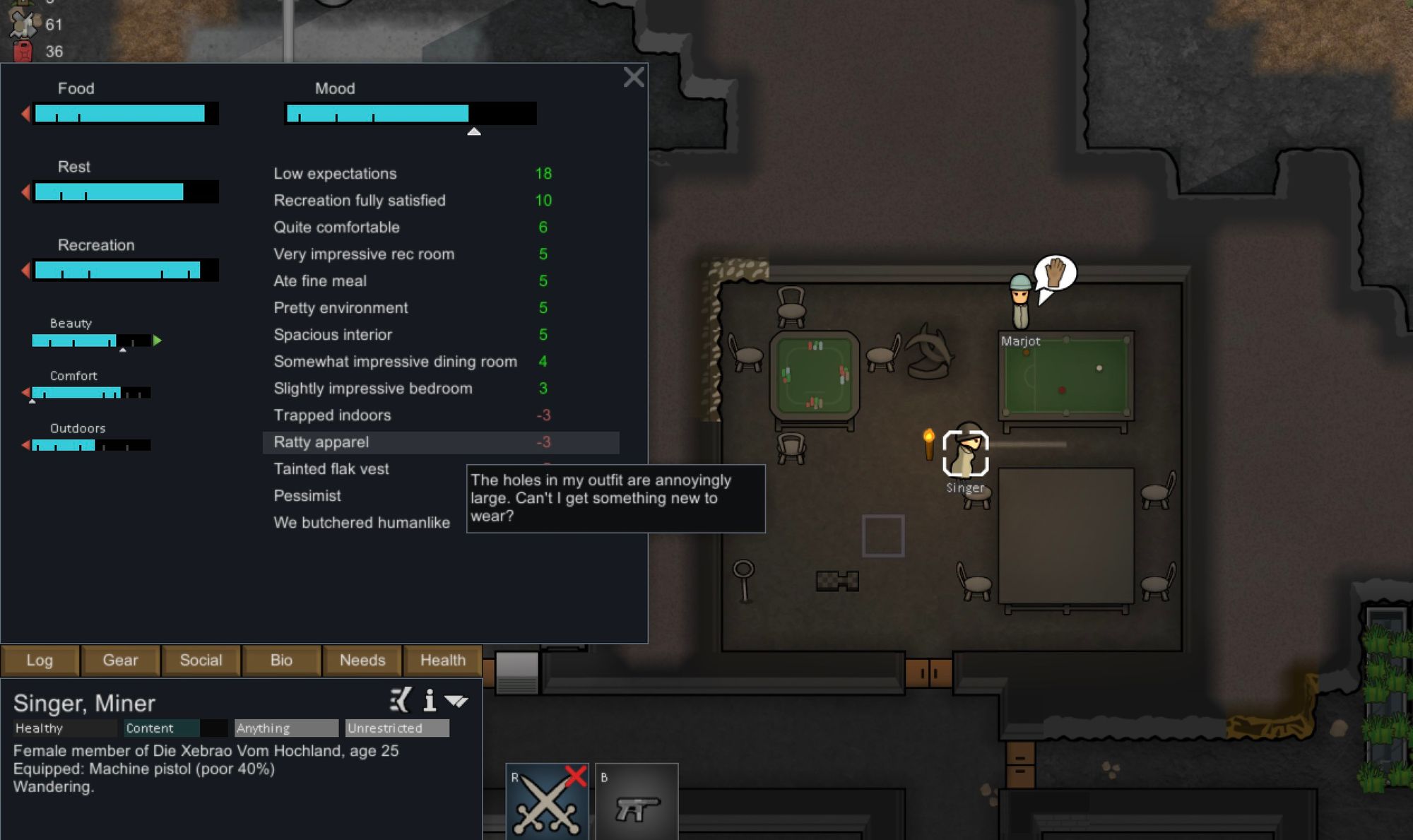
If you also want to sell the clothes to traders, it makes sense to process all of your fabrics (do forever).
Different Types of Clothing in Comparison
In RimWorld there are different groups of clothing that can't all be combined with one another. Basically, the colonists' bodies are divided into different areas and layers. This explains which items of clothing can be worn together.
While the cowboy hat protects against heat, the tuque only insulates against the cold. Depending on the season, a different headgear is therefore recommended for your colonists.
| Clothing | Heat Insulation | Cold Insulation |
|---|---|---|
| Cowboy hat | +9°C | -1,8°C |
| Tuque | +0°C | -9°C |
The button-down shirt is a direct upgrade to the t-shirt and should therefore always be preferred. The button-down shirt has better item values at low additional costs.
| Clothing | Heat Insulation | Cold Insulation | Resources |
|---|---|---|---|
| T-Shirt | +1,8°C | -4°C | 40 |
| Button-Down Shirt | +1,8°C | -4,7°C | 45 |
The only alternative to pants is tribalwear. While pants only cover the legs, tribalwear also covers the upper body. If you compare tribalwear with pants + button-down shirt, it protects better against heat and cold, but it does not cover the arms (which can be important for protection during combat).
| Clothing | Heat Insulation | Cold Insulation | Arm Protection |
|---|---|---|---|
| Pants + Button-Down Shirt | +3,2°C | -8,3°C | Yes |
| Tribalwear | +10°C | -10°C | No |
To give your colonists a pullover, you can equip your them with a duster, jacket or parka. While the duster is good for hot biomes, the parka is the counterpart for the cold days. The jacket is the middle ground between heat and cold insulation.
| Clothing | Heat Insulation | Cold Insulation |
|---|---|---|
| Duster | +15,3°C | -10,8°C |
| Jacket | +5,4°C | -14,4°C |
| Parka | +0°C | -36°C |
The insulation values and protection against injuries are also dependent on the material used and the quality of the item.
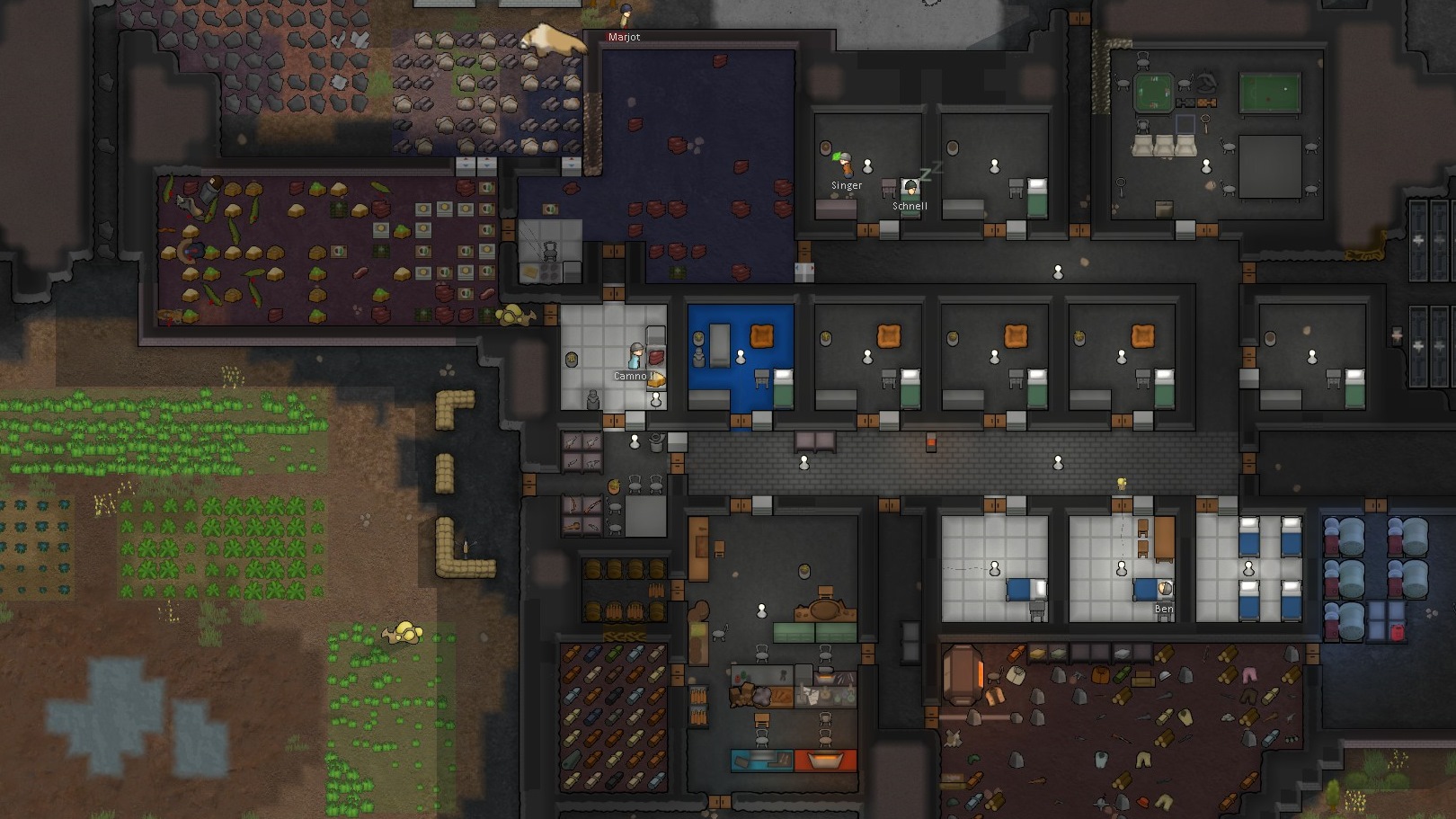
Common Combinations of Clothes
- In warm biomes: Cowboy hat, button-down shirt + pants / tribalwear, duster
- In cold biomes: Tuque, button-down shirt, pants, parka


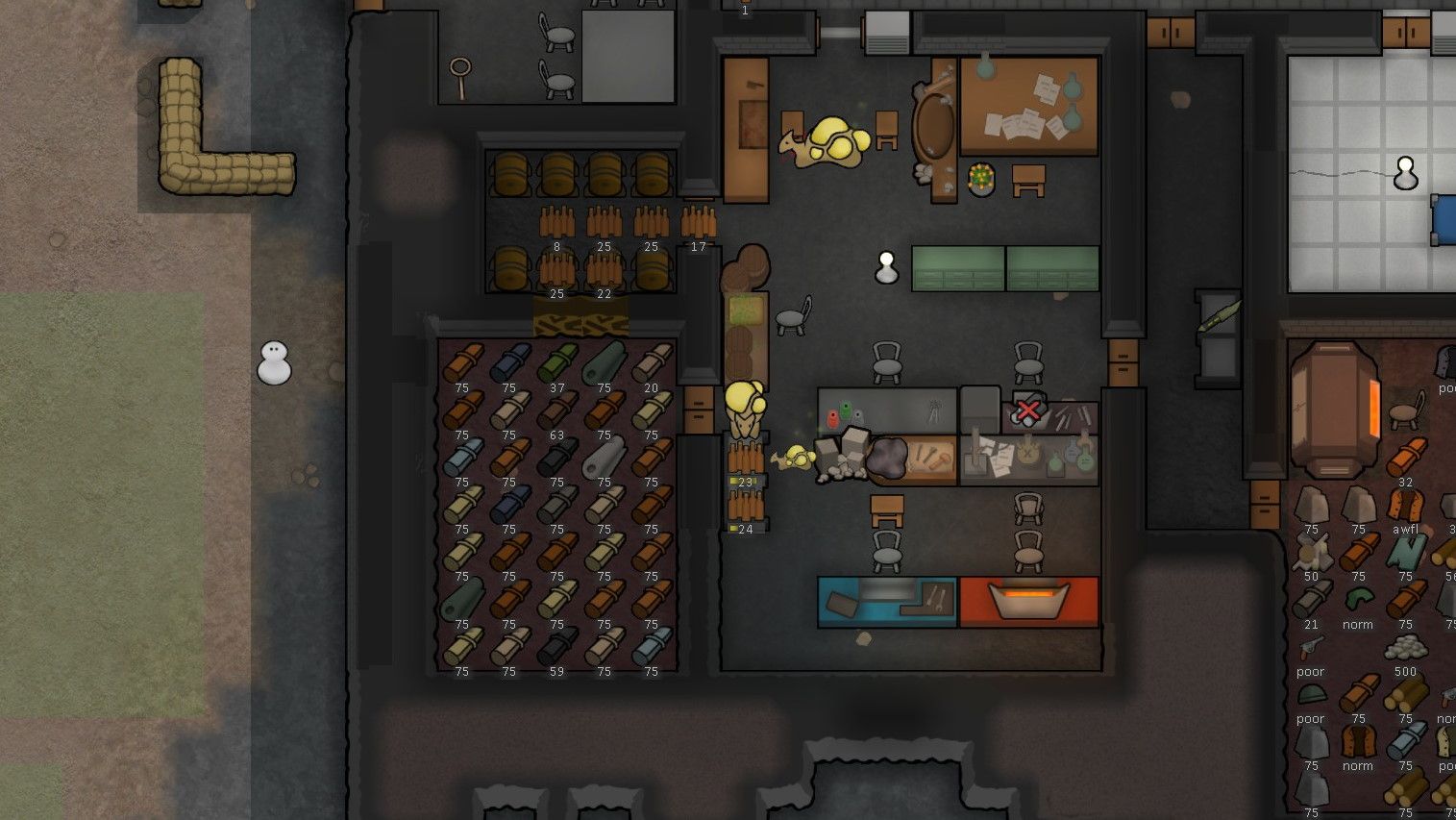

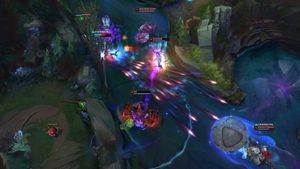

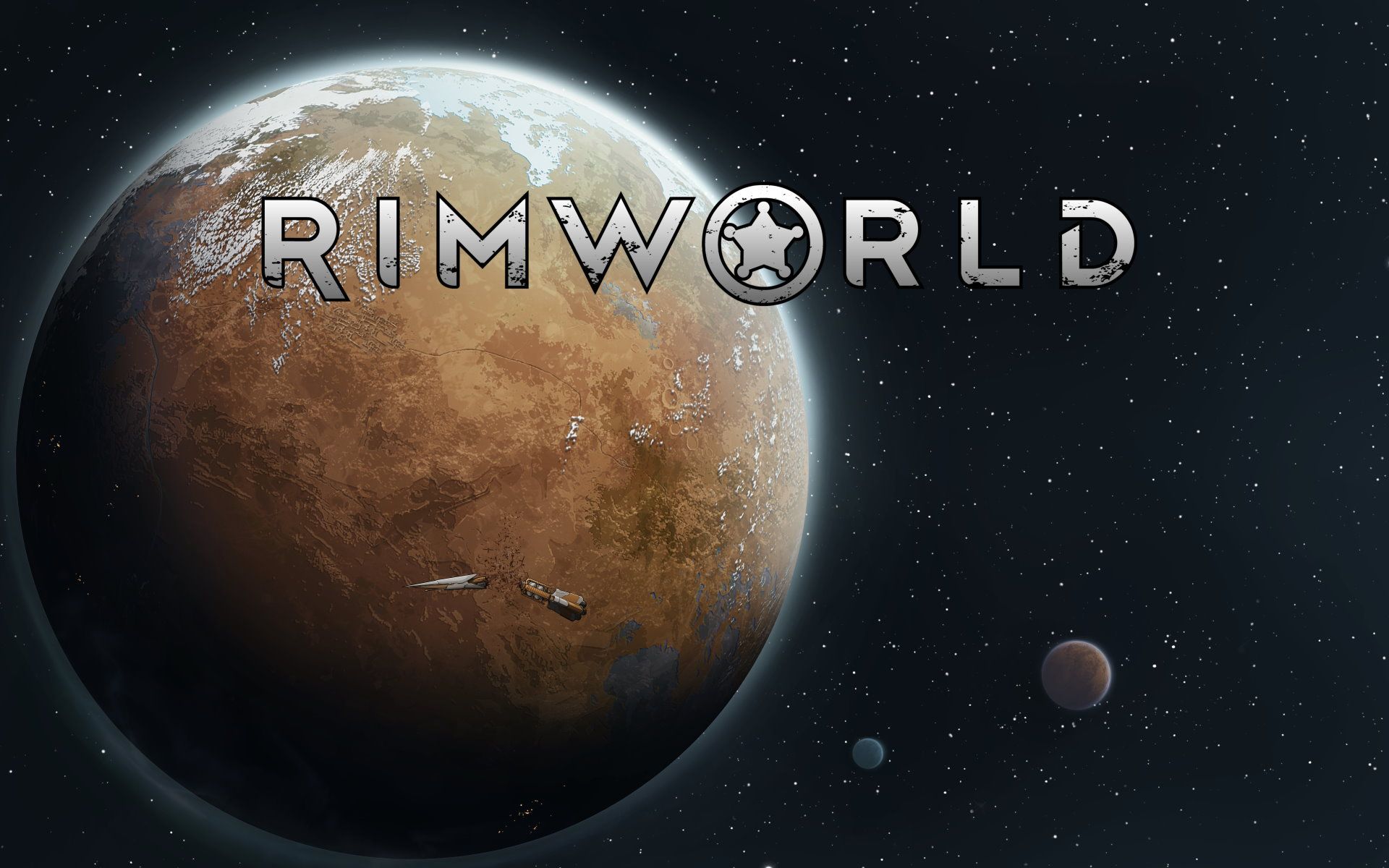
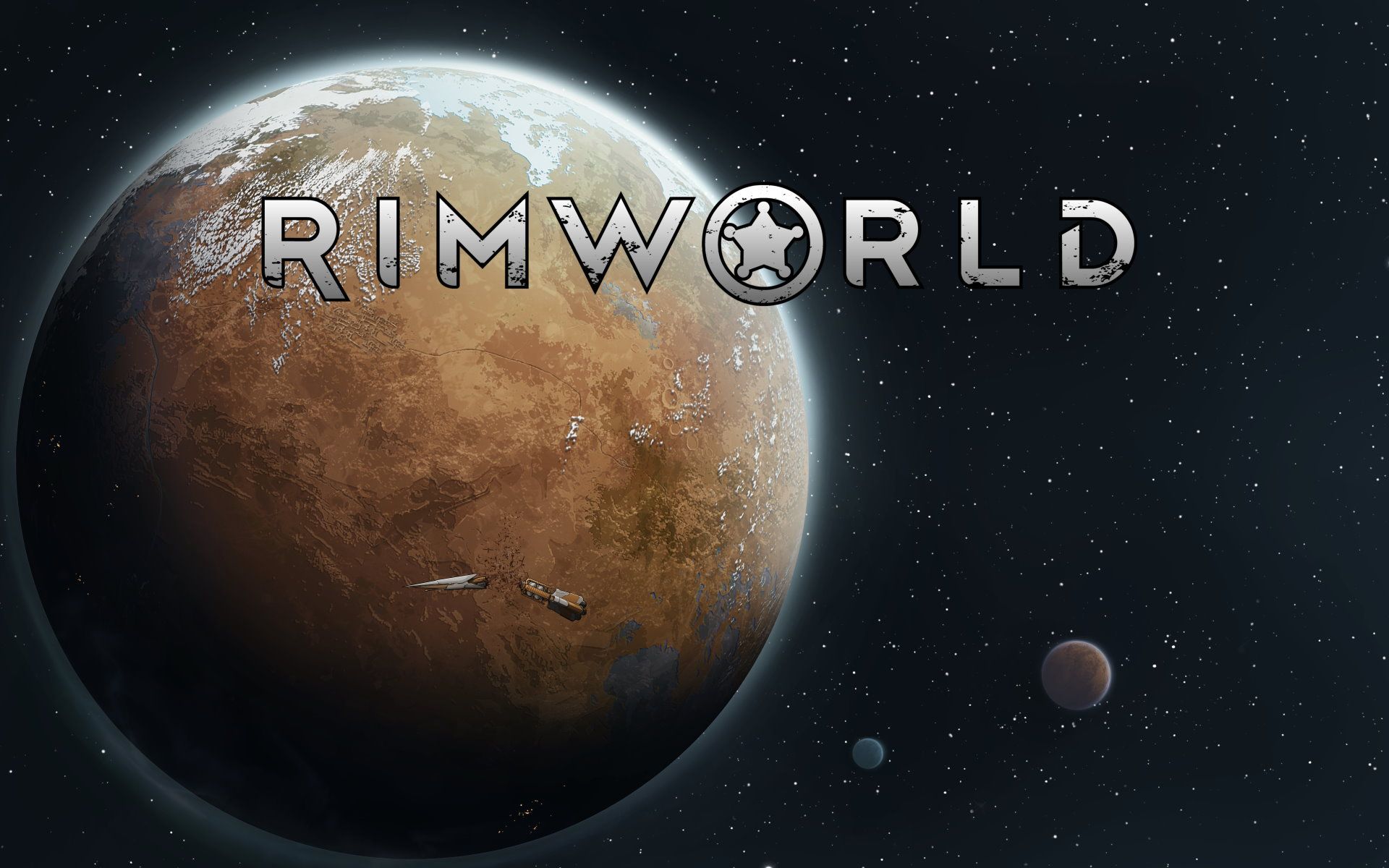




If you press this button it will load Disqus-Comments. More on Disqus Privacy: Link